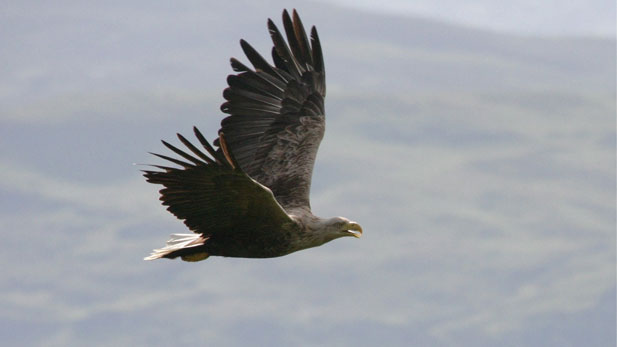
Wildlife filmmaker Gordon Buchanan left his home on the Scottish island of Mull when he was 17 to travel the world and film wild animals in exotic settings. For 15 years he did just that, making a well-respected name for himself as a cameraman and presenter of natural history films set in a number of far-flung locations. But returning to his birthplace for a full year to turn his camera on the very place where he learned to love the wild was an assignment he relished. The wide variety of wildlife and stunning landscapes make Mull the perfect place to film, and the island held a few surprises even for its native son.

Located off the coast of western Scotland, the island of Mull is one of those rare and fortunate places that seem untouched by the passage of time. An intoxicating blend of mountains, forests, coastline, moorland and crystal-clear rivers provides a picture-perfect backdrop for its rich diversity of wildlife. Buchanan arrived especially eager to film white-tailed sea eagles, re-established on Mull during his 15-year absence; the otters that he had seen as a child all along the coasts; and the whales, dolphins and basking sharks offshore that he had never seen before.

White-tailed sea eagles hold a special place on Mull. Though originally re-introduced as a species on a neighboring island, the enormous birds with eight-foot wingspans adopted Mull as their home instead and the locals have responded with programs to monitor them and help ensure their continued health and safety. Every Easter, the police, the Royal Society for the Protection of Birds (RSPB) and the community launch the Mull Eagle Watch, to protect vulnerable sea eagle eggs for the 38 days they are incubated in the nest. As licenses to film the birds are quite restrictive, the assistance of the RSPB is key in obtaining permissions and selecting a good nest to film. Sitting through the rainy Scottish weather and enduring the long waits between eagle sightings gives Buchanan plenty of time to appreciate Scotland’s light and landscapes in a new way. But before long, he is happily filming two sea eagle chicks being raised by their hard-working parents.
View program excerpts and find interactive content, teacher lesson plans and more at pbs.org/nature.

By submitting your comments, you hereby give AZPM the right to post your comments and potentially use them in any other form of media operated by this institution.